2023 Ford F-150 Lighting Pro Road Test: Does it still make sense at $60,000?

The 2023 Ford F-150 Lightning Pro that just left my driveway is a prime example of how pricing changes can shift your whole perspective on a vehicle. When Ford launched the Lightning for the 2022 model year, the Pro started at a dumbfoundingly good price of just $41,769. Today, that same truck will run you $61,869. What in the blazes happened?
According to Ford, materials costs, supply chain struggles and market factors happened. No matter the reason/excuse, though, such a price increase in such a short period of time is simply unfathomable for any vehicle. You might be thinking to yourself that the original price was simply too good to be true. I was curious myself how Ford managed to price the Lightning as low as it did originally, and when queried in 2021, Ford’s general manager for its battery-electric vehicle division, Darren Palmer, had answers. In a nutshell, Ford promised that it could still turn a profit on the Lightning at its original price because of scale and parts sharing with the gasoline F-150 and its other EVs. It makes some sense — nothing sells better than the F-150 in the United States.
Almost two years later, though, and Ford’s ability to brag about profiting at that eye-popping low price is kaput. The vinyl-covered, base-spec work truck version of the Lightning is now an over-$60,000 proposition, and when you know where the price started from, it’s impossible not to feel a little depressed about the truck’s competitiveness. However, the “competitiveness” angle is where Ford has truck buyers where it wants them.
What other electric pickup are you going to buy? There’s the Rivian R1T, but that’s both considerably smaller than the Lightning and goes for even more money. And then there’s the Hummer EV Pickup, which is basically unobtainium for now until GM ramps up production. Neither are exactly what you think of when someone says “pickup,” either. Others are coming, including more traditional offerings from GM and Ram, but they’re not here yet. Buyers are therefore left with the Lightning, nothing or the excellent gas-powered work truck across the dealer lot.
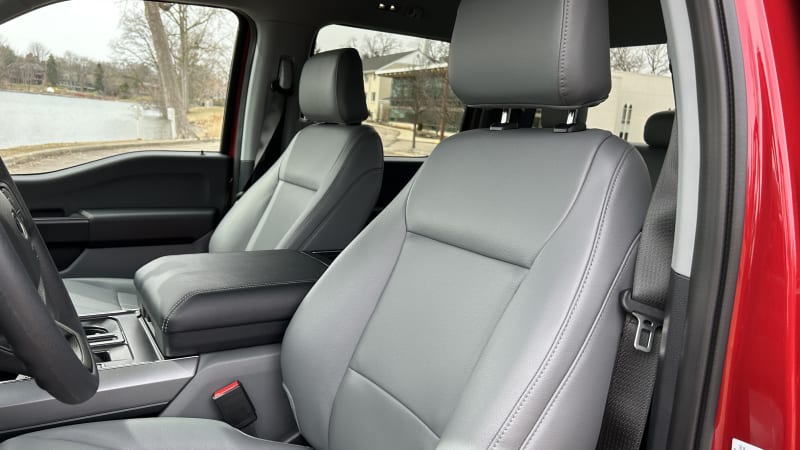
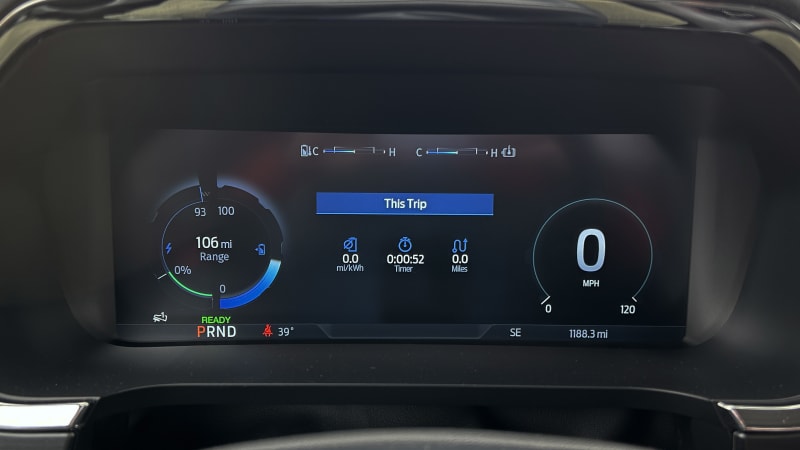

Ford specifically made the Lightning Pro for fleet duty. Be that as it may, the Pro “work truck” with vinyl seats/flooring, no keyless entry and a plastic steering wheel is surprisingly well equipped. If you want a similar level of equipment and features in a gasoline-powered F-150 — including the Pro’s included 2.4 kW Pro Power Onboard generator system, LED headlights, 12-inch infotainment system, fully digital gauge cluster, dual-zone auto climate control, heated seats and way more — you’re looking at an F-150 XL PowerBoost hybrid that is pushing well into the mid-$50,000 range. Going without Pro Power and the requisite hybrid powertrain would save some money, but it’s a tough feature to lose. When you drill down on these like-for-like equipment comparisons, the Lightning Pro that was looking like a rip-off just a few moments ago looks like it has potential. Plus, there are a lot of advantages you get when opting for the Lightning.
For one, the Lightning is both quicker and rides better than any gasoline-powered F-150. Maybe a fleet coordinator doesn’t care about such things, but as an owner, those are big advantages. The Pro comes standard with 452 horsepower and 775 pound-feet of torque from its two electric motors, getting it to 60 mph in less than 5 seconds. Only the F-150 Raptor R will beat it in a straight line. Its independent rear suspension design means the ride quality over poor pavement trounces that of gasoline-powered F-150’s. Driving a more comfortable truck every day makes it worth more, especially if the use case for such a truck will be as a daily driver. The frunk is another big plus, as it allows additional, easy to access storage that a gas-powered F-150 doesn’t. The complete silence of the powertrain and convenience of one-pedal driving are other big Lightning advantages over any of the gas-powered F-150s, even the PowerBoost hybrid. Unless you’re one to relish in the roar of Ford’s 5.0-liter V8, there’s no beating the serenity of cruising around town with just you, your thoughts and some tunes.


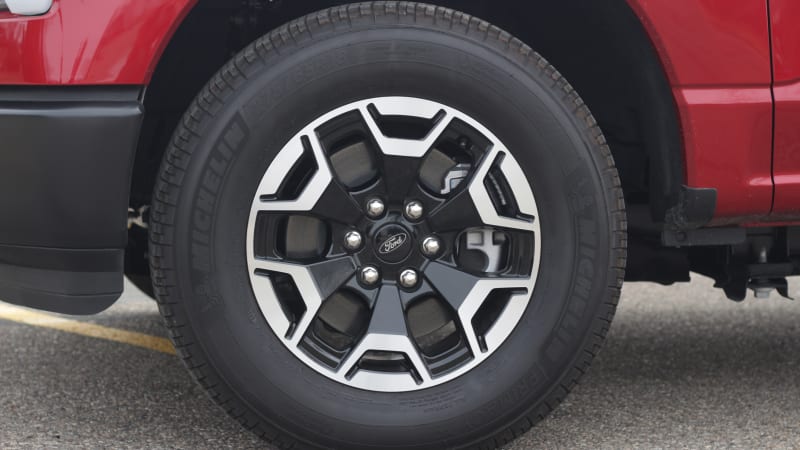
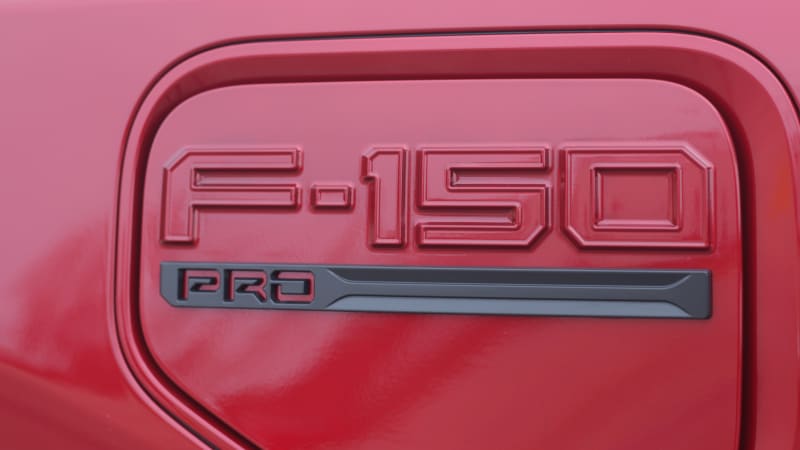
For all those reasons, it’s logical that someone might pony up the extra cash for a Lightning Pro instead of a decked-out gas-powered work truck for personal use. At the same time, the Lightning has some limitations if you’re buying it purely for work. Towing capacity might be respectable with the Extended Battery Pack and Max Trailer Tow Package at 10,000 pounds, but the distances you tow will be vital to the purchase decision. Range while towing with the Lightning suffers greatly, and relying on our public charging infrastructure to create a seamless and reliable experience for a business will be a struggle (at best) until the infrastructure improves. The actual driving experience may be a good one while towing (especially if you’re local), but we can still heartily recommend a gas-powered F-150 for any long-haul adventures.
Ford also limits retail consumers who buy the Lightning Pro to the standard battery pack, which will only get you 240 miles of range. Meanwhile, commercial customers are allowed to order the Pro with Ford’s bigger pack — as our test truck was equipped — rated for 320 miles of range. That makes sense for businesses trying to accumulate a fleet of vehicles that can haul or tow big loads, but it only makes the Pro an even tougher financial pill to swallow. Ford charges an extra $10,000 for the extra 80 miles of range, but businesses should also note that it unlocks the higher towing capacity and more horsepower for even quicker acceleration — because maybe your workers will get to their locations quicker as a result? I don’t know, I’m spit-balling here.

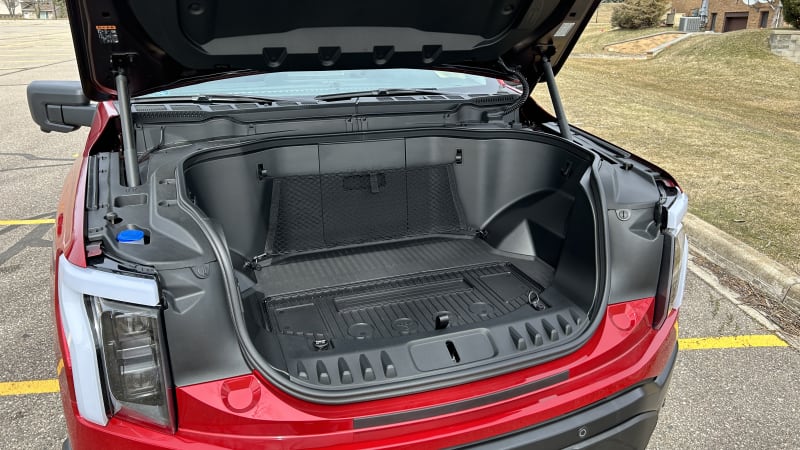
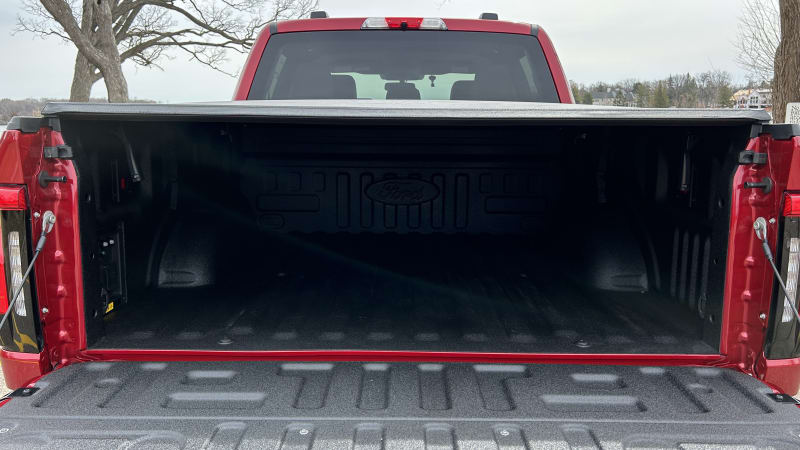
Regardless of the use case, a work truck that steps into the $70,000 range is, at face value, an outrageous proposition. Perhaps it’s the right call for a business specifically targeting green transportation that is already on a secure financial footing. Or maybe you’ve been considering a nicely-optioned F-150 PowerBoost that is already beginning to approach the Pro’s base price in the low $60,000 range. Stepping up to a Lightning Pro might sound like a stretch, but perhaps gas savings could cover that margin over time? On the other hand, you could also just buy two totally base F-150 XLs with 8-foot beds and standard cabs for the price of our test truck. That gas burner will tow 8,200 pounds and haul 1,965 pounds with its 3.3-liter V6, and while big infotainment systems and high-tech features might sound enticing, those aren’t going to move the needle for businesses trying to make sound financial decisions and maximize how far their money takes them. Compared to a base XL work truck, the Lightning Pro looks like a luxury truck in price. Plus, that “luxury” truck still has vinyl seats and vinyl floors.
This line of thought brings us back to the one logical situation where the Lightning Pro makes sense today, which is as a personal vehicle. If you want an electric truck for the least amount of money, the Pro would still drive brilliantly, hold the whole family, and be filled with fantastic tech – you’d just have to live with vinyl seats. Unfortunately, as of this review’s publishing, this is all theoretical as the Pro is currently sold out for retail customers. Commercial buyers can go buy their $60,000-plus work trucks, but unless Ford lowers the price back down closer to the more reasonable $40,000 range, it’s going to remain a tough sell for most use cases beyond those parking it in a personal garage.
Related video:



